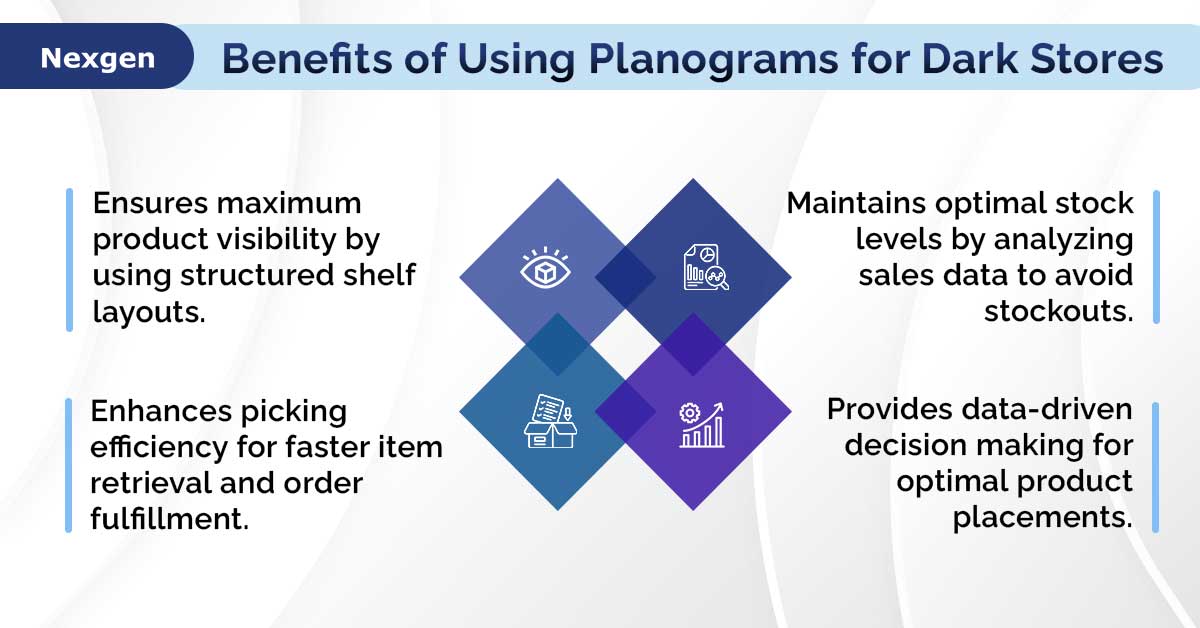As the e-commerce industry continues to expand, dark stores have emerged as a pivotal component in the supply chain, enhancing efficiency and customer satisfaction. Based on reports, the average growth rate for the dark store market from 2018 to 2023 was 23%.
Dark stores have gained significant attention in recent years as online grocery shopping has surged, pushing retailers to streamline their order fulfillment processes. The pandemic has increased this trend, intensifying the discussion around dark stores. In response to the unprecedented demand for e-commerce groceries, retailers have been turning brick-and-mortar locations into dark stores to better manage the high volume of online orders.
What is a Dark Store?
A dark store is a retail outlet that caters exclusively to online orders, functioning as a distribution center rather than a conventional storefront. They have become increasingly popular with the rise of online shopping, especially in sectors like groceries, where timely delivery is crucial. To optimize the operations of dark stores, many retailers are turning to shelf space planning solutions, such as planograms. They play a critical role in optimizing shelf space in dark stores by ensuring every inch of storage is used effectively. In this blog, we will explore the top five benefits of using planogram services for dark stores.

1. Ensuring maximum product availability.
Planograms provide a structured shelf layout for product placement, allowing dark stores to make the most of their available space. By strategically organizing products based on size, shape, and demand, planograms ensure that shelves are filled efficiently, minimizing wasted space. By strategically placing high-demand or cross-merchandising items in easily accessible locations and organizing products in a logical sequence, dark stores can streamline the picking process, reduce congestion, and make the most of their storage capacity. For instance, fast-moving items such as daily groceries can be positioned near the picking stations, reducing the time it takes for workers to fulfill orders.
2. Improved inventory management.
Effective inventory management is crucial for the effective operation of dark stores. Planograms help in maintaining optimal stock levels by providing a clear layout of product placement. This visual guide aids in quick stock replenishment, minimizes stockouts, and reduces overstock situations. By following planograms, store managers can ensure that inventory is consistently organized and up to date, leading to more accurate inventory tracking and forecasting. For example, dark stores experience fluctuations in demand for specific goods, influenced by factors such as the day of the week, seasonality, or holidays. Using past sales data, retailers can place a higher volume of goods in advance, to avoid out-of-stock.
3. Efficient use of warehouse and assortment planning.
The average size of a U.S. retail store is slightly less than 60,000 square feet, whereas a typical dark store spans between 100,000 to 200,000 square feet. Unlike traditional supermarkets, dark stores do not require wide aisles between shelves, allowing for taller shelves and more efficient space utilization. This surplus storage capacity enables dark stores to not only accommodate a larger inventory but also offer a broader range of products. Unlike traditional retail outlets, dark stores do not require space allocation for display purposes. This absence of display space eliminates the necessity for safety stock and consequently reduces the number of turnover days. Using planogram reports, retailers can see the changes in the sales dynamics of each SKU. This will help them decide what goods should be removed from the assortment.
4. Enhanced picking efficiency.
Planograms significantly enhance the picking efficiency in dark stores. With a well-organized layout, pickers can easily locate and retrieve items, leading to faster order fulfillment. Planograms reduce the time spent searching for products, thereby increasing the overall speed and accuracy of the picking process. This efficiency boost is particularly beneficial during peak times, such as holidays and sales events, when order volumes are high. For example, a picker can follow a predetermined path to collect items in the most efficient order, reducing backtracking and streamlining the workflow using planograms.
5. Data-driven decision-making.
Planograms are often created using data analytics, which means they can be tailored to optimize product placement based on sales data and customer preferences. This data-driven approach helps in identifying the best locations for high-demand products, seasonal items, and promotional goods. By continuously analyzing sales and inventory data, dark stores can adjust their planograms to reflect changing consumer behavior and market trends. For example, if retail data shows a spike in demand for a particular product, it can be moved to a more accessible location on the planogram, ensuring quicker fulfillment and higher customer satisfaction.
Overview of Nexgen Planogram Services
Nexgen offers store-specific planograms for clients that optimize sales and achieve category objectives. We create customized planograms for your business to ensure that these are better aligned with your goals and merchandising strategies. Our expertise in planogram automation helps us build planograms faster, better and consistently. Whether it is creating a planogram from scratch, or a typical reset, we have the knowledge, tools, and experience to get the job done for you.
Get Your Free Trial Now!